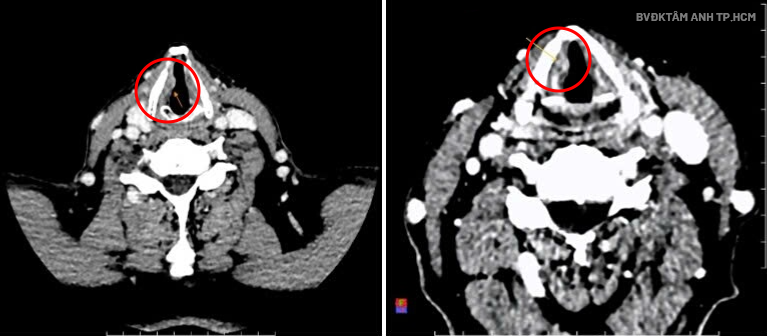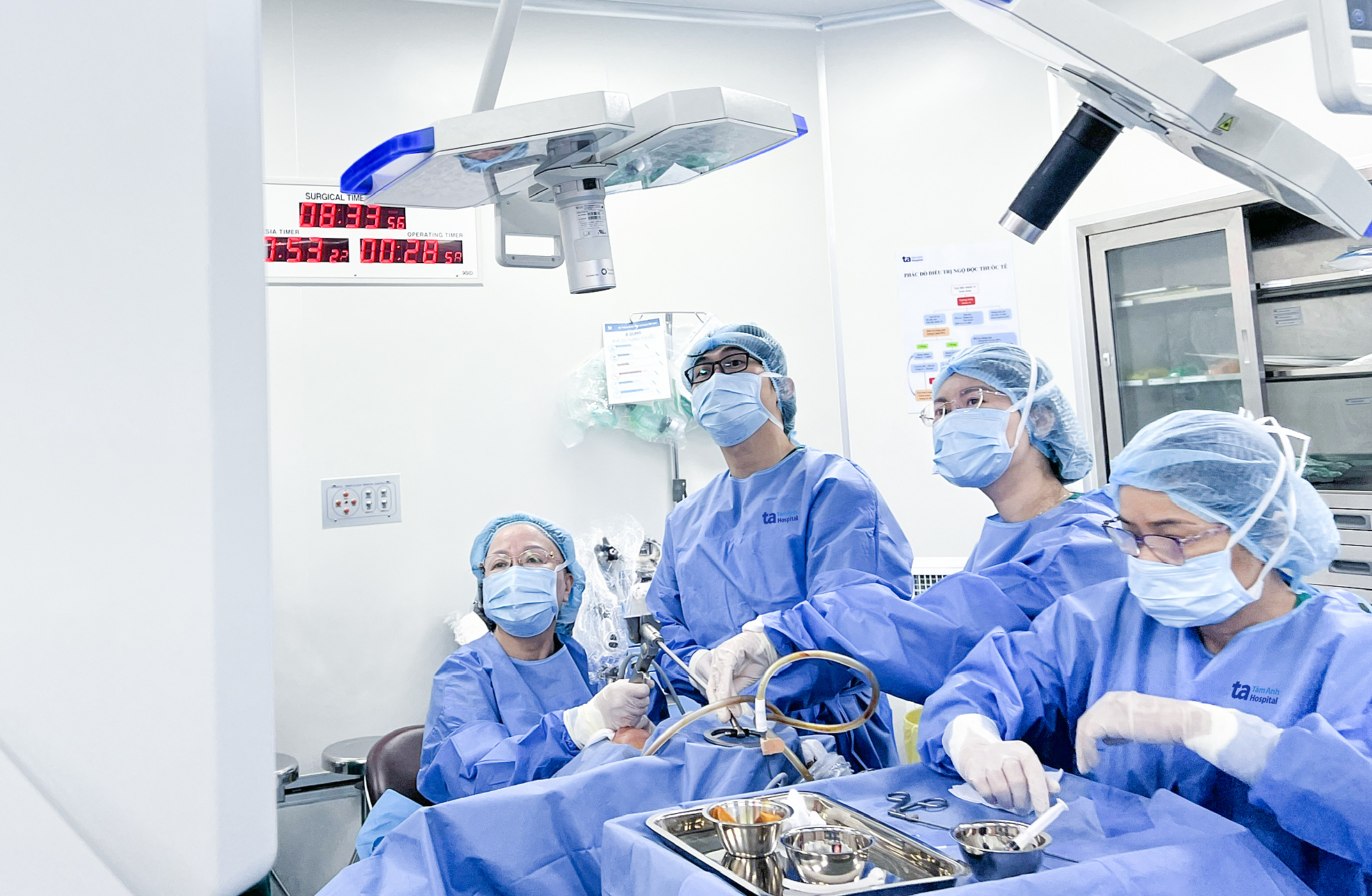An ear, nose, and throat endoscopy at Tam Anh General Hospital in Ho Chi Minh City revealed swelling in Mr. Binh's hai vocal cords, a growth on the right vocal cord, and arytenoid cartilage hyperemia. CT results confirmed a lesion in the larynx, at the level of the right vocal cord, described as a growth measuring about 7x14x6 mm. A biopsy confirmed invasive squamous cell carcinoma, grade hai, stage T2.
Professor, Doctor Tran Phan Chung Thuy, Director of the Ear, Nose, and Throat Center, stated that Mr. Binh had laryngeal cancer, with the lesion originating from the squamous cell layer in the laryngeal region. The tumor showed grade hai invasion into surrounding tissue in terms of differentiation, indicating a medium malignancy. It restricted vocal cord movement and invaded the paraglottic region but had not metastasized distantly.
 |
CT scan showing the tumor on the right vocal cord. Photo: Tam Anh General Hospital |
Professor Chung Thuy prescribed transoral endoscopic laser surgery to remove the laryngeal tumor. This method uses a CO2 laser (wavelength 10,600 nm) with a high-energy light beam precisely directed at the cancerous tissue. It thoroughly removes the tumor while preserving healthy surrounding tissue, maintaining laryngeal function, and limiting the spread of cancer cells. This technique is applicable only for early-stage laryngeal cancer when the tumor is small, localized, and has not deeply invaded surrounding tissues. The cure rate is comparable to radiation therapy.
 |
Professor Chung Thuy (far left) performs endoscopic CO2 laser tumor removal surgery on Mr. Binh. Photo: Tam Anh General Hospital |
After surgery, Mr. Binh received a nasogastric tube to deliver liquid food directly to his stomach, avoiding oral swallowing and reducing infection risk in the early postoperative period. Doctors designed a personalized diet to ensure the patient received adequate nutrition.
Post-surgery, Mr. Binh's health stabilized, and he was discharged after 4 days. At his follow-up appointment 14 days later, he had recovered well, requiring neither chemotherapy nor radiation therapy. His swallowing, speech, and respiratory functions were fully preserved, he ate normally, and gradually regained his voice. Mr. Binh returned to Australia but continued to visit Vietnam for follow-up appointments after mot month and hai months.
According to Professor Chung Thuy, transoral CO2 laser microsurgery has few complications, leading to faster patient recovery, earlier discharge, and reduced costs.
Laryngeal cancer is the second most common upper respiratory tract cancer, often affecting patients 60-70 years old, with a 5-year survival rate of about 64%, according to the U.S. National Library of Medicine. Early detection and timely treatment of laryngeal cancer improve patient prognosis. In advanced stages, patients may require partial or total vocal cord removal.
The primary cause of laryngeal cancer is smoking. Alcohol abuse and frequent exposure to chemicals like asbestos or coal dust increase the risk of laryngeal cancer. Hoarseness is an early and primary symptom. Patients may also experience a dry cough, phlegm, throat discomfort, a sensation of a foreign object in the throat, and laryngeal dyspnea with swallowing difficulties.
When experiencing unusual symptoms, such as hoarseness lasting more than hai weeks, persistent cough, or painful swallowing, patients should visit specialized ear, nose, and throat medical facilities for examination, endoscopy, and necessary tests. Preventing laryngeal cancer involves quitting smoking, limiting alcohol, using safety equipment when regularly exposed to toxic substances in the workplace, and maintaining healthy eating and sleeping habits.
Uyen Trinh
| Readers can send questions about ear, nose, and throat conditions here for doctors to answer |












